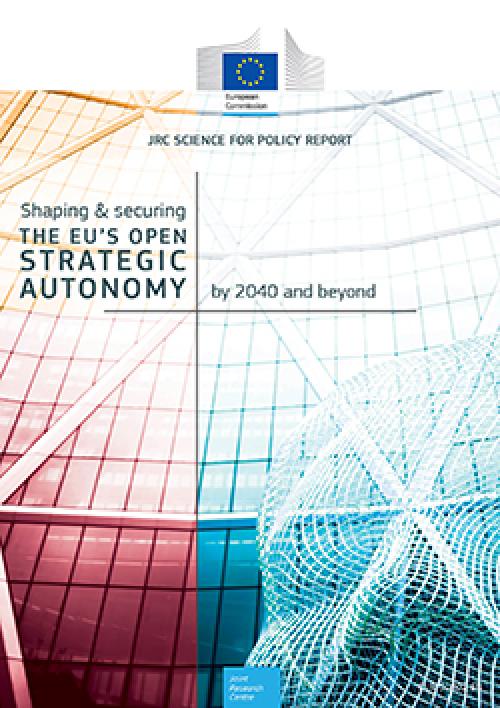The JRC’s science for policy report

During the past nine months, the JRC engaged over a hundred of stakeholders and experts within a foresight process looking at the future of EU’s Open Strategic Autonomy by 2040 and beyond.
The foresight process focused on the analysis of European existing strengths, areas for improvement and it identified what are emerging challenges and future opportunities. It focused on five different areas: geopolitics, technology, economy, environment and society.
The results of this process is the JRC’s Science for Policy report Shaping and securing the EU’s Strategic Autonomy by 2040 and beyond, that also fed into the 2021 Strategic Foresight Report adopted by the College of Commissioners on 8the September .
What is the future of the EU’s Open Strategic Autonomy?

Let’s look briefly into these different areas to get a sense of the report.
- In geopolitics, the EU could bolster its influence by strengthening strategic alliances with like-minded countries and organisations, and by increasing its internal political cohesion to act jointly on defence and security matters.
- In technology, to achieve digital sovereignty the EU could scale up EU start-ups in innovation-friendly ecosystems, and design tech regulations in a way that fosters innovation in line with EU values and standards.
- In economy, in order to avoid one-sided dependencies, the EU could strengthen the resilience of its economic assets and industries. By reinforcing the international role of the euro, it could enhance the stability and resilience of the financial system.
- In environment, the EU would need to keep its leading role in climate diplomacy and as pacemaker for the green transition. It could use the green transition to modernise the EU industry through a continued leadership in renewable energy technology and the implementation of a more circular economy.
- In society, the EU could strengthen its position in the world by focusing on fundamental rights and values, as well as strengthening democracy internally. To ensure that the EU workforce will remain competitive in the future the EU would need to modernise its education system and focus on adult training and reskilling in all areas.
The foresight process in a nutshell
The process involved broad consultations with stakeholders and experts of the European Institutions (i.e. the Commission, Member States, the European Parliament, the Council, and discussions with partners in the European Strategy and Policy Analysis System (ESPAS). It relied also on the inputs and strategic discussions with experts academic organisations and think tanks, civil society organisations and business representatives.
The foresight process included the development of scenarios on how the EU’s global standing could look like in 2040. The scenarios pictures a different future of Europe and thereby helps to understand strategic choices, emerging challenges and best ways to capitalise on the available opportunities for Open Strategic Autonomy in 2040. The four scenarios are Green Leadership, Complex Prosperity, Economic Growth Above All and Retreat Inwards.
Read the report
Discover the JRC Science for policy report and learn more about the future of the EU’s Open Strategic Autonomy.

https://publications.jrc.ec.europa.eu/repository/handle/JRC125994
| Originally Published | Last Updated | 08 Sep 2021 | 18 Jul 2022 |
| Knowledge service | Metadata | Foresight | The Megatrends HubHorizon Scanning | Megatrends |
Share this page
